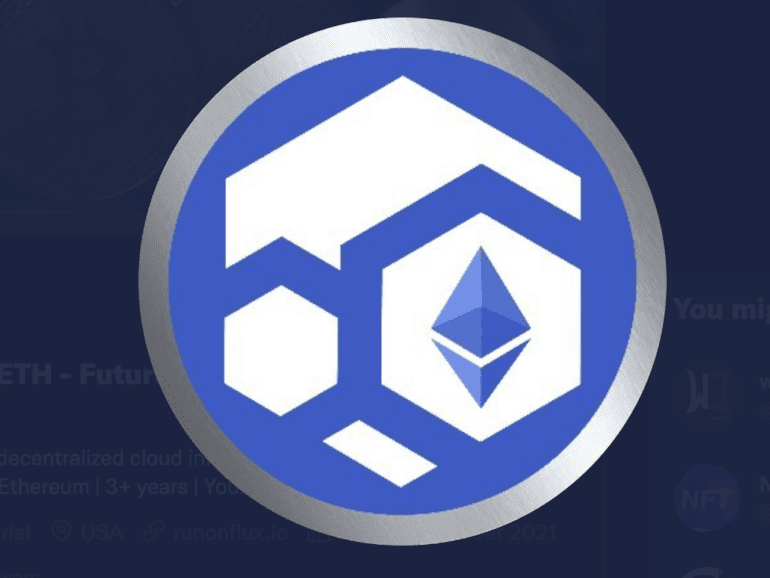The ethereum merge, tentatively scheduled for mid-September this year, is causing ripples in the crypto community.
Ethereum miners look for alternative revenue streams while debates rage back and forth about the merits of its old PoW versus the imminent PoS.
Due to multiple delays, some were skeptical of the switch, but a successful final dry run in early August seemed to seal the deal.
Ethereum’s beta launch was in 2015. Aiming to build on the technology first established by bitcoin, the blockchain is programmable, supporting smart contracts and developing decentralized applications (dApps).
It’s had its ups and downs but rose steadily to become one of the crypto world’s most popular blockchains. Programmability has been its silver bullet, leading to an ecosystem of over 2,500 dApps and over 200,000 ERC tokens.
Many developers gravitate towards ethereum, stating that the network’s maturity and security surpass any other. However, with the switch from PoW to PoS just around the corner, some are concerned that it won’t continue with the same functionality.
For those who are die-hard PoW advocates, there could be an opening for a successor to fill ethereum’s shoes…
PoS, the end of decentralization for ethereum?
In a previous article, I wrote about the battle of PoW vs. PoS. Experts I interviewed spoke about the different consensus systems and, on large, most attributes they mentioned lined up.
However, there are mixed reports on approaching the subject of decentralization within the shift from PoW to PoS. There seems to be a difference of opinion regarding which is more decentralized.

Why is decentralization important? Well, depending on who you talk to, its benefits range from improved, innovative development, efficient and fairer governance, and increased empowerment.
“The entire reason we’re here is decentralization,” said Daniel Keller, Founder and CSO of Flux.
“A really simple way to fix this is to ask; Who controls your node network? Did you do an ICO to fund your project? And if that’s a yes and it’s controlled by the team or individuals on a team, then the business is centralized.”
He believes firmly that PoS is the end of ethereum’s decentralization.
“I think ethereum went from Proof of Work, heading in the right direction of pushing things to the masses, to letting their shareholders and stakeholders influence their technology,” he said.
“We’re at a very pivotal point in time right now because you have the powers that be moving to centralization. ETH is owned by Consensys. It’s got JP Morgan’s fingerprints. It’s the old guard of Web2 and their attempt at the next version of the internet.”
“The big part of the merge is I think what we’re learning is that technology will constantly iterate. Sometimes it iterates forward, and sometimes it iterates backward. I think ethereum has iterated backward. Flux is the next logical iteration of Proof of Work.”
What is Flux, I hear you say…
You may or may not have heard of Flux, but some who have say it could be the next ETH.
“I think a lot of folks are looking for the next, I wouldn’t say the next ethereum, but the first Flux,” laughed Keller. “So they’re going out and doing their due diligence or looking at projects that make sense.”
“You have folks who want Web3. They want decentralization. And I think that’s what has powered Flux into that position. People are waking up to the need for a platform that can’t be censored and can’t arbitrarily be taken down for no reason at all. It doesn’t rely on any one central entity. So there are no gatekeepers or toll booths, or toll collectors. It’s by the people for the people.”
With decentralization at its core, Flux provides a framework to help centralized entities make the definitive move to Web3 infrastructure. Using a network of over 13,000 nodes hosted worldwide by “decentralized system administrators,” the network provides the compute resources to deploy dApps and an ecosystem of different functions.
“We’re a tech company that happens to have a blockchain,” said Keller. “We are a fully developed ecosystem fixing many problems, not only with DeFi but also blockchain.”

Three main problems to be solved
Using the PoW consensus mechanism is key to the first issue of decentralization, explained Keller, as it allows people to participate in the network. “We’re filling a hole with PoW decentralized compute to allow individuals to participate in the network,” he continued.
“The next problem we’re fixing is the holy grail of blockchain of interchain operability – allowing multiple blockchains to work together. We’ve started to spread out of our ecosystem and bring other platforms back for that interchain operability. I feel Flux is the glue that makes that interchain operability happen.”
“And then the last we’re looking to solve is clearly define what Web3 is and allow people to have a user interface that feels like web two, but be able to deploy on web three infrastructure.”
An issue with Web3 that is becoming more apparent as DeFi infiltrates the mainstream is its accessibility challenges. The use of jargon and interfaces that for years have appealed to early adopters now has to be assessed for a wider audience.
An alternative approach to the PoW ecological issue
Amid the ethereum merge is the debate on the benefits and drawbacks of each consensus mechanism.
The stand-out benefit of the PoS is the energy consumption. Studies have shown the bitcoin PoW system has an energy consumption equal to that of entire countries, belittling any emissions savings of carbon reduction. This is even more critical as we approach the deadlines for carbon neutrality set out in the COP26 Paris agreement.
Initial reports showed that a target of global reduction of carbon emissions by 2050 is essential to keep the worst, permanent effects of climate change at bay. Additional surveys have found that this target is far from being completed soon.

The European Central Bank hinted that PoW could face being banned by 2025 if significant changes were not made.
“I think there’s a lot of naivety that they could even think they could ban proof of work,” said Keller. “The whole concept behind decentralization is not asking for permission.”
“I think the better solution is what Flux is doing. We’re looking for ways to reduce the environmental impact of PoW with a product called Proof of Useful Work.”
Proof of Useful Work (PoUW) attempts to improve the efficiency and security of blockchain. Rather than using the “lottery” algorithmic system used by PoW, it attempts to solve “real-world” problems like machine learning, protein folding, and visual effects rendering through the mining energy usage.
“People have to compute resources. It will be useful if that infrastructure can be deployed on the Flux network for real proof of work. We can take and run till death, the stuff that would have ended up in landfills, basically giving a marketplace for people to get massive compute resources.”
He explained Flux used this system to assist in mapping COVID proteins and is currently in talks with the University of Switzerland to make the Flux network available for rendering needs of their students.
Decentralization has its merits
The economic downturn has put many businesses in a period of stress, which many say is highlighting the merits of genuinely decentralized systems.
“I think having gone through this latest crunch in the crypto markets validated out quite a bit of the financial technology that we’ve come to rely on,” said John Sun of Spring Labs. “There wasn’t a single DeFi platform that lost their equity dollar, essentially, the underlying our value for its holders. The liquidation bots worked as perfectly as we could have expected under the circumstances, through some very major price corrections.”
“Meanwhile, you saw the CeFi institutions that were putting on risk manually and taking offers manually with risk managers get blown up. There are several examples of these situations, either through liquidity crunches or mismanagement of risk. I think this is a pretty shiny example of what DeFi technologies are capable of and what’s possible to build with in the future.”
The difference between how CeFi institutions such as Coinbase and DeFi entities such as Aave fared have become increasingly apparent. However, to create a DeFi system out of a CeFi entity, Keller explained, many Web2 concepts need to be reworked.
To fulfill this goal, Flux has had to recreate tools such as two-factor identification and implement Self-Sovereign Identities.
“Every little piece of a project that we’ve looked at, we’ve had to think of, is it decentralized? Can we make it decentralized? And how do we make it better as we scale?”
“If you don’t have a solid framework underneath that’s decentralized at the base, Flux, then these things will all just be Web 2.5.”


